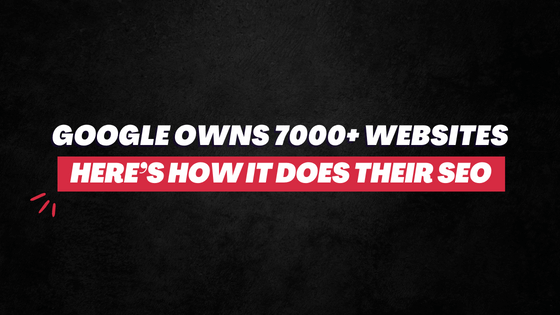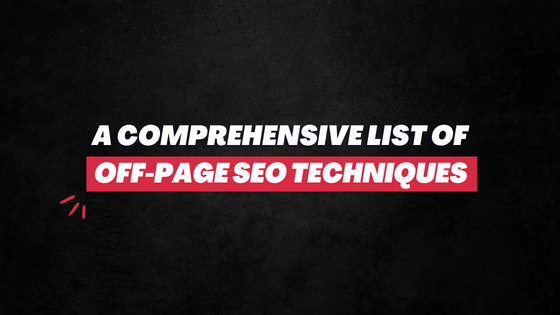You’re producing great content. And you’re doing all you can to get quality backlinks.
Is that all to SEO?
Probably not—not at least in 2023.
If you’re a new blogger or marketer, you need to do a lot more to combat high market competition, build trust and get high organic traffic.
Without wasting any time, let’s jump right into it…
Here are 9 actionable and advanced SEO techniques for 2023 every blogger and marketer must try this year to dominate Google and Bing:
1. Optimization for Featured Snippet
In case if you haven’t noticed, for many queries, Google is trying to solve your problems right on its result pages.
You don’t even have to enter any website now.
Google something and more often than not the answer to it will be right there in front of you. Here’s an example:

There are many types of featured snippets. Some results can include bullet points, others can contain paragraphs and graphs.
It depends on your query type.
Generally speaking, such rich snippets are triggered if a query is in a question form, including ‘how, who, why, and what’.
But this isn’t necessarily complete.
For example, Google ‘Reduce Fat’ and the result still comes back with a numbered featured snippet.
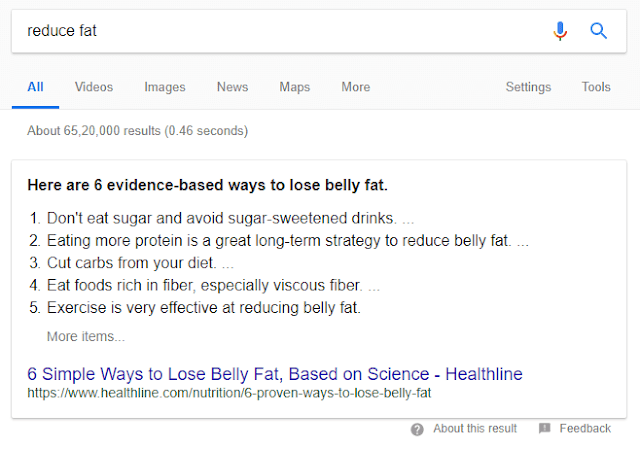
In either of the search queries (question-based or not), one thing is clear – two of the most popular and SEO-friendly article types are listicles and how-to.
There are a few other rich blocks you will find on SERP.
Like, in recent times, Google Answer Box has become more prominent on the result pages.

Here’s a rich snippet…

Then there’s the knowledge graph

Now, unsurprisingly, websites getting featured in these special boxes have higher traffic.
A study done by HubSpot shows that winning featured snippets actually doubles the Click-Through-Rate (CTR).
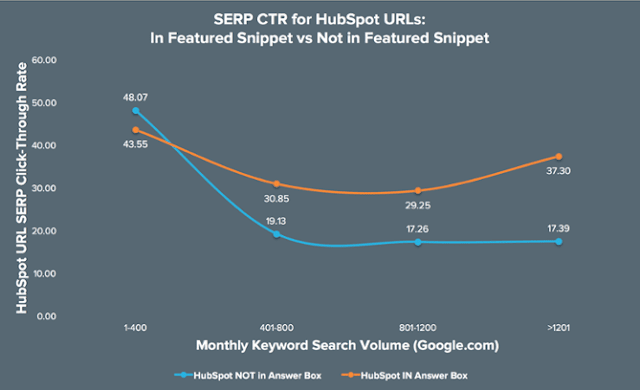
So how do you optimize for the featured snippet and other rich blocks on Google SERP?
There are no hard-hitting rules for it.
But multiple case studies have found the following ways to help you win featured rich snippets:
- Find a popular question in your niche and answer it clearly and precisely.
- Along with the direct answer to the question, provide other valuable inputs as well. (For example, if the question is ‘What is Content Marketing’, answer it precisely in a few lines. Then go on to explain how people can plan and implement content marketing strategies. This will add more value to your article.)
- Keep the length of your precise answer between 40-50 words count. A study by SEMrush found it to be the most common length for featured snippets.
‘
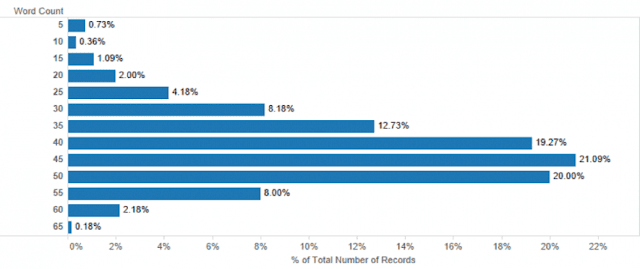
- Do research on competitors in your niche who are getting featured snippets. And find out the keywords they are targeting and in what format they are answering the particular question. Then (partially) copy them. Use tools like SEMrush for competitive analysis.
- Be careful of the header tags. Use H1, H2, H3 tags correctly.
Additional Reading: HubSpot’s Guide to Winning Google’s Featured Snippet
2. Mobile-Optimized Fonts
Your fonts might look decent on the desktop. But that might not exactly be the case when viewed on a smartphone.
In fact, even to this day, of all SEO techniques and strategies, readability is an extremely overlooked aspect of on-page optimization.
There are countless examples of even top websites neglecting the reading experience. Does your belong to the same group?
It is important to have the right font size, as well as font-weight, style, line height, and letter spacing. They must be optimized for mobile users.
Additional Reading: Fix Your Fu%ked Up Font
3. Using LSI keywords
If you ask me which SEO techniques are popular the most at present, I would likely put this in my top five.
Google has become much more intelligent today. No more is it relying on just keywords to identify the topic of your content.
Give these two articles a read to know more about this:
The search engine is using various other parameters as well to know whether or not your article is relevant to what a user is looking for.
Latent Semantic Indexing is one of those parameters.
Basically put, LSI is a method that helps Google look for the closely related words of the primary (and secondary) keywords in your article, deeply understand the topic of your content, and then rank it accordingly per the relevancy to search queries.
These closely related words are called LSI keywords.
For example, if your article is based on the keyword ‘Amazon’. How will Google understand that it’s about the e-Commerce platform Amazon and not Amazon Forest? It will use (among several other factors) LSI keywords to judge that.
If your article includes words like ‘shopping’ and ‘buy’, the search engine will know the content is about Amazon e-commerce. If the article contains words like ‘forest’ ‘rainforest’ and ‘Brazil’, it will know that you’re talking about the Amazon forest.
When you use LSI keywords in your content, you help Google better understand the intent of what you’re trying to say.
And the better it understands your article, the more positively it will impact your SEO efforts for targeted keywords.
LSI Graph is a great tool for generating LSI keywords.
Additional Reading: How to Use LSI Keywords to boost your SEO
4. Thinking About Voice Search
As of January 2018, one billion internet searches were happening over voice every. And by the end of 2020, 50 percent of all searches will be voice searches. (Source)
So have you still been careless about this aspect of the search industry, you might want to change your stance.
We’re already in an era of voice searches. And we’re going to stay here for long. So you must optimize your site accordingly.
Optimizing for voice search doesn’t really require much extra effort.
For example, if you ask your Google Assistant what is SEO, it will simply read the information from the featured snippet.
So in order to perform well for voice searches, you must first optimize for featured snippets.
A few other SEO tips for voice searches include:
- Write in a conversational tone.
- Answer questions with clear and short lines and paragraphs. Avoid difficult words.
- If you have a physical address for your brand, update your ‘Google Business Profile’ listing. 22 percent of voice queries are for local content.
Additional Reading: How to optimize for voice search
5. Setup Schema Markup
Schema Markup is a type of microdata that provides search engines the meaning of information on webpages.
While it has been in existence for about 7 years now, it is only now are webmasters and bloggers seriously recognizing it.
Applying structured data to your website can positively increase its ranking on SERP, which can eventually boost your CTR and conversion.
So if you haven’t already set up schema tags for your website, do it right away.
Additional Reading: What is (and How To Setup) Schema Markup
6. Backlinks Without Links Back
Does Nofollow backlink helps SEO – this debate may finally get settled in the coming months and years. Because here’s what Bing has explicitly said and Google has hinted…
“If you publish high-quality content that is highly cited on the internet — and I’m not talking about just links, but also mentions on social networks and people talking about your branding, crap like that. Then you are doing great.” – Google Webmaster Trends Analyst Gary Illyes said.
“Years ago, Bing figured out context and sentiment of tone, and how to associate mentions without a link. As the volume grows and the trustworthiness of this mention is known, you’ll get a bump in rankings as a trial.” – said a former senior product manager at Bing Duane Forrester
Both search engines are using brand mentions that aren’t hyperlinked as their trust and ranking factor.
This new rise of linkless mentions establishes two points:
- You must focus on building your brand name. As a blogger or marketer, that should be one of your topmost priorities. Because with competition so high in nearly every niche – identity, retention, and loyalty are the key elements to winning the digital game.
- Even if you aren’t getting any backlinks or getting nofollow links, you must still put energy into guest blogging. The linkless mention of your brand, in an article or bio section, can influence your site’s ranking.
Additional Reading: 23 Personal Branding Mistakes You Should Avoid (But You Won’t)
7. Accelerated Mobile Pages (AMP) Implementation
Accelerated Mobile Pages is a pet project of Google to further optimize the experience of mobile users.
And several years after its launch, AMP has turned up to be extremely popular, with many top brands implementing it.
As of October 2017, over 25 million domains had created AMP pages.
Implementing AMP is basically putting some extra sets of codes on your website.
Once done, your webpages will load 2x faster than standard webpages and have one-tenth of the latency as a responsive mobile page.
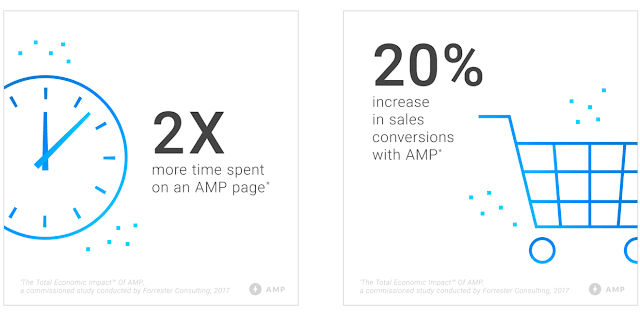
Additional Reading: Create your first AMP page
8. Blogging and NOT Writing
For many, it wasn’t always clear.
Blogging is not just writing. It’s about talking, engaging, and empathizing with the readers – and not providing them with vanilla information alone.
It’s about solving their problems.
In recent times, with more and more brands taking up blogging, this traditional notion is finally loosening.
86 percent of B2B companies are already blogging regularly and are not solely relying on Press Releases, Sales Pages, and Social Media posts.
Many of the write-ups we see today reflect emotions, personality, and connection with the readers.
And this, unsurprisingly, increases their dwell time and conversion, as well as decreases their bounce rate.
All in all, thanks to the RankBrain update, it positively affects website ranking on SERP.
So, if you blog to convince your readers that you’re a great writer, you might be failing as a blogger. Blog for the audience and not yourself. Because blogging is not just about writing.
Additional Reading: Do You Need to Have A Strong Writing Skill For Blogging
9. Micro-Targeting The Audience
If you try to target everyone, you will fail to target anyone.
A common mistake new bloggers and marketers make is trying to woo everyone. And in this quest, they often end up making their piece of content rather broad and generic.
And this is not only a basic blogging mistake but also results in poor traffic and conversion.
Say, if a teen is searching for relevant articles on tips to cut weight. They are more likely to click on the result ‘How to lose weight quickly for teens’ than ‘how to lose weight’.
He is likely to invest more of his time (and money) in an article that addresses his distinct needs and requirements than a piece of content that’s basically talking to everyone.
Content personalization is more important than ever today. It improves CTR rate, which then goes on to increase the conversion rate.
Plus, it can easily help you beat big brands that usually shell generic content.
By micro-targeting individual segments, you can attract more readers who use long-tail queries and then establish your readership into a tightly knitted community.
Remember, you don’t need millions of readers. Even a loyal following of thousand can bring you incredible rewards.
Know who your target audience is. Group them into multiple segments and then produce personalized content for each of them.
Additional Reading: The Rising Importance of Micro-Targeting
Go, Do It Now…
These are 9 in-trend SEO techniques for bloggers and marketers that you must try in 2020 and beyond.
From improving search visibility to increasing organic traffic to boosting conversion — they promise to bring you unparalleled results.
Recommended Read: How to Start a Blog in 2023? An End-to-End Guide

